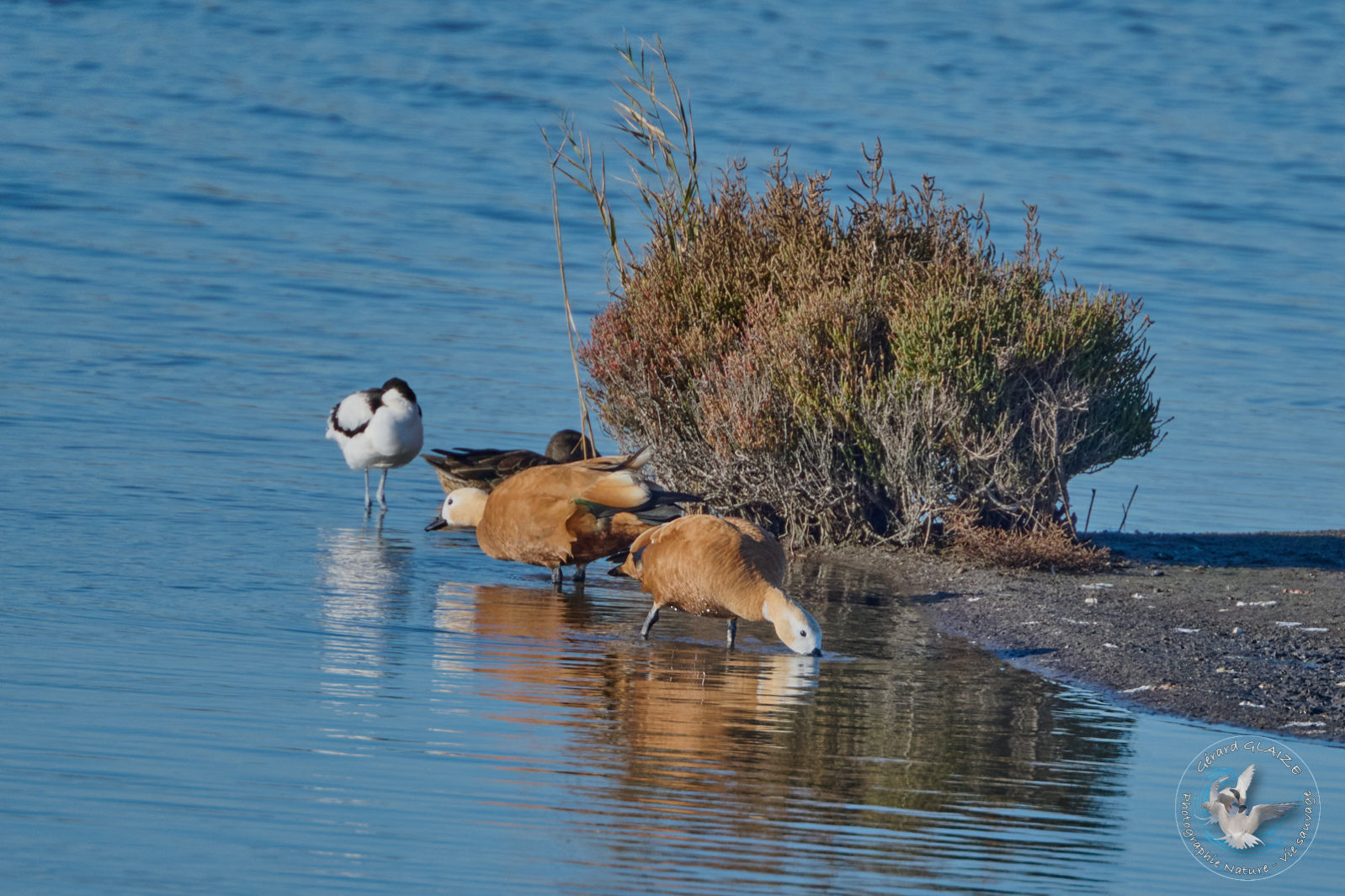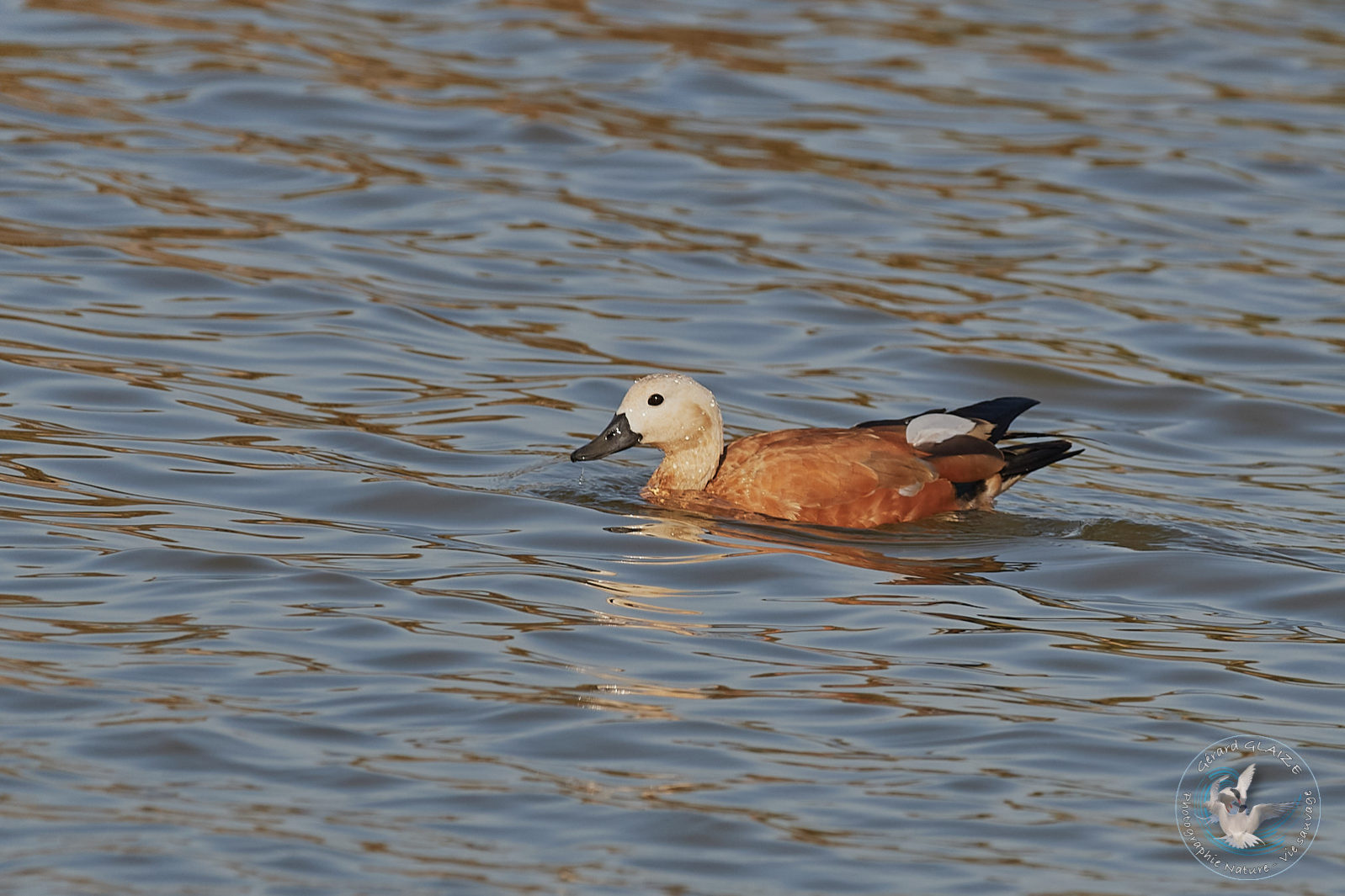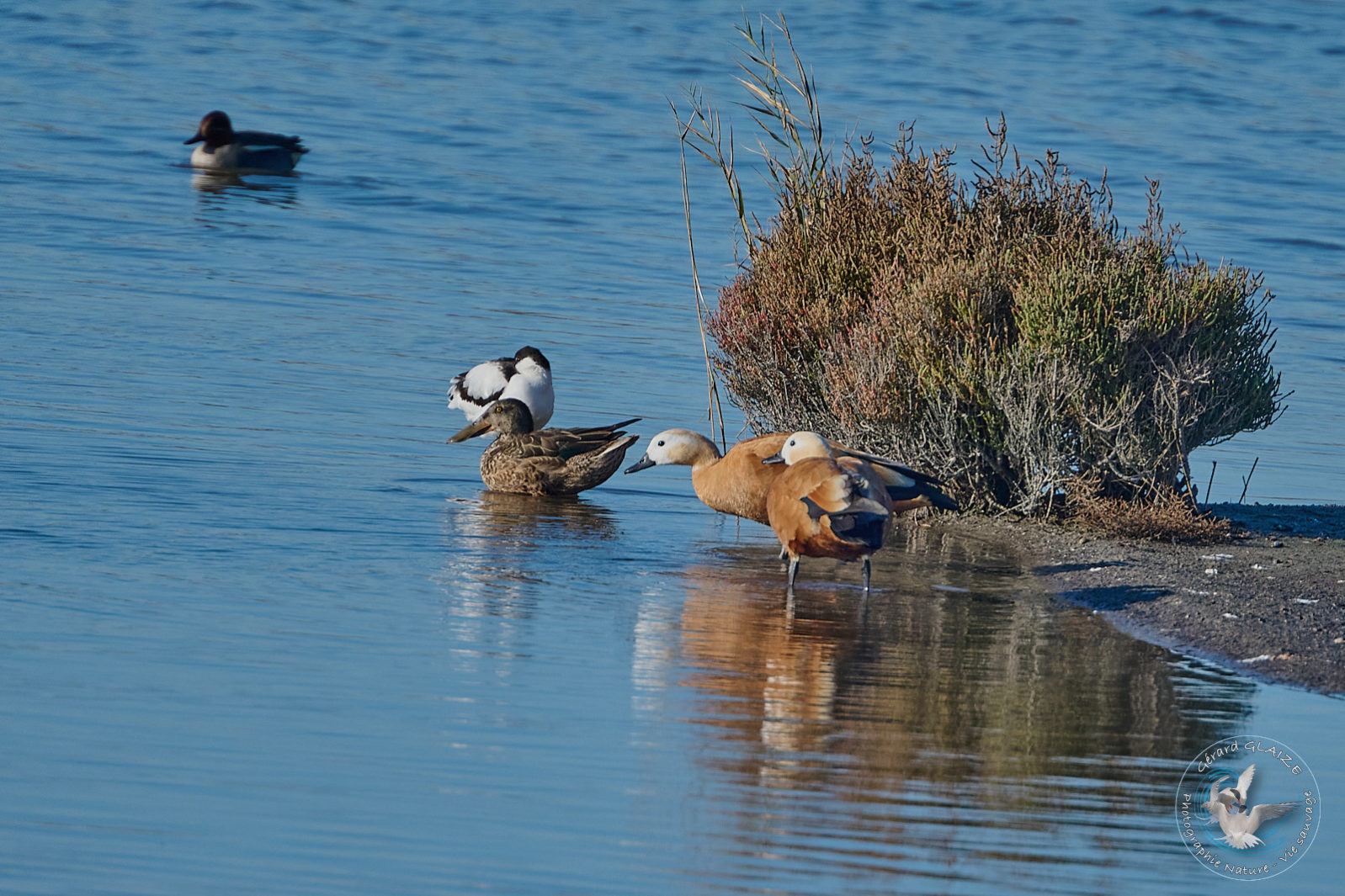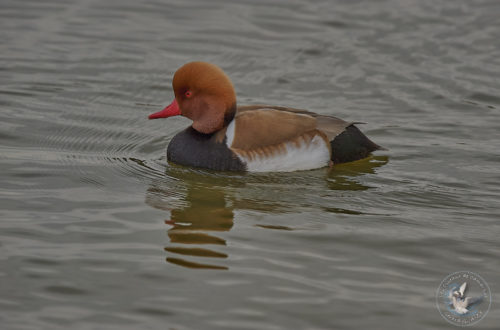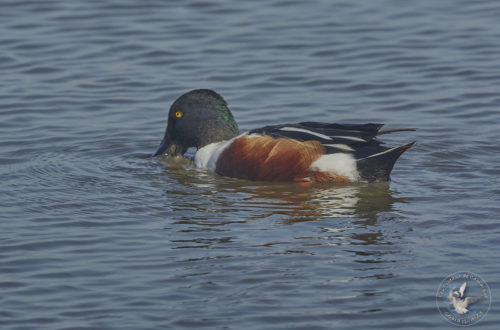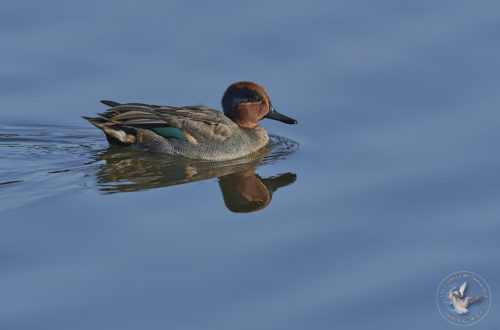Ruddy Shelduck
Ruddy Shelduck is a large duck that has entirely orange-fawn plumage except for the head, which is much lighter. The head-body transition is made by a small black collar in the case of the male. Wings are black and white with a small green mirror in its central part. Beak, legs, flight feathers and rump are black. The female can be distinguished from the male by the extended white area between the beak and the eye and the absence of a black collar.
The main distribution area is in Asia, however the species has been introduced into Western Europe for ornamental purposes. Individuals that escaped from captivity have ended up forming a small population in Switzerland, which is beginning to spread outside this country and particularly in eastern France where the species can be observed.
The Ruddy Shelduck is gregarious, except when nesting.
Ruddy Shelduck
Scientific name : Tadorna ferruginea
Family : Anatidae
Length: from 60 cm to 78 cm – Wingspan: from 110 cm to 135 cm
Weight : from 1.000 gr to 1.600 gr
IUCN Conservation Status: LC
Flight
The Ruddy Shelduck has a powerful flight with vigorous wingbeats.
Habitat
The Ruddy Shelduck nests on the banks of rivers and steppe lakes, avoiding wooded areas. The species uses cavities for nesting, particularly abandoned burrows in its native range, but also possibly tree cavities when there are any, up to a relatively high height. In Western Europe it thus theoretically competes with native species such as the Barn Owl, the Tawny Owl or the Kestrel. This could possibly make it a threat to these species, but this is debated because these species also frequent the same environments as the Ruddy Shelduck in its native range in Eastern Europe and are abundant there.
This is why in Switzerland it is considered an invasive species to be eliminated.
Regime – Diet
The Ruddy Shelduck is essentially vegetarian, spending long periods on land, walking in grassy areas or swimming in shallow water to feed. However, it can be classified as an omnivore. In fact, green plants, herbaceous plants and seeds make up most of its menu, but it supplements its diet by secondarily consuming small molluscs, crustaceans, worms and aquatic insects, which is a fairly common practice among ducks.
Nesting
The Ruddy Shelduck lives in pairs or small groups. The pairs are monogamous and defend a territory during the breeding season. This takes place between April and May. The nest is placed in a rock crevice, a burrow or a tree hole. In fact, it is a simple depression padded with down. The female lays 8 to 10 eggs there. Then she alone ensures the incubation which lasts from 28 to 29 days. Both parents feed the precocial young. The fledglings take flight after 55 days.
Protection
The breeding population in the European Union does not exceed 50 pairs. In addition, the modification of wetlands and hunting in the wintering grounds are the most significant threats to the species.
Cry
The Ruddy Shelduck gives loud “aakh” calls. It is noisy when flocks gather in winter. Before flying away, it gives repeated “pok-pok-pok” calls. The female has a lower voice than the male.


